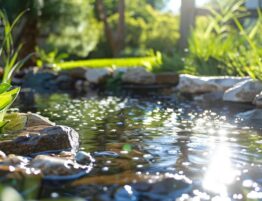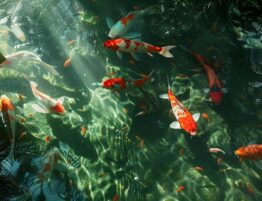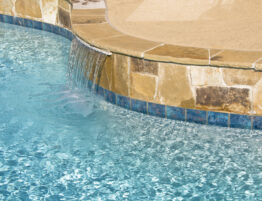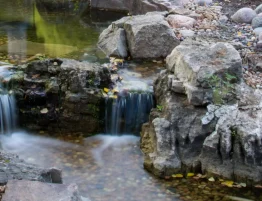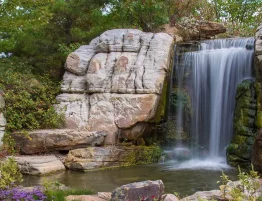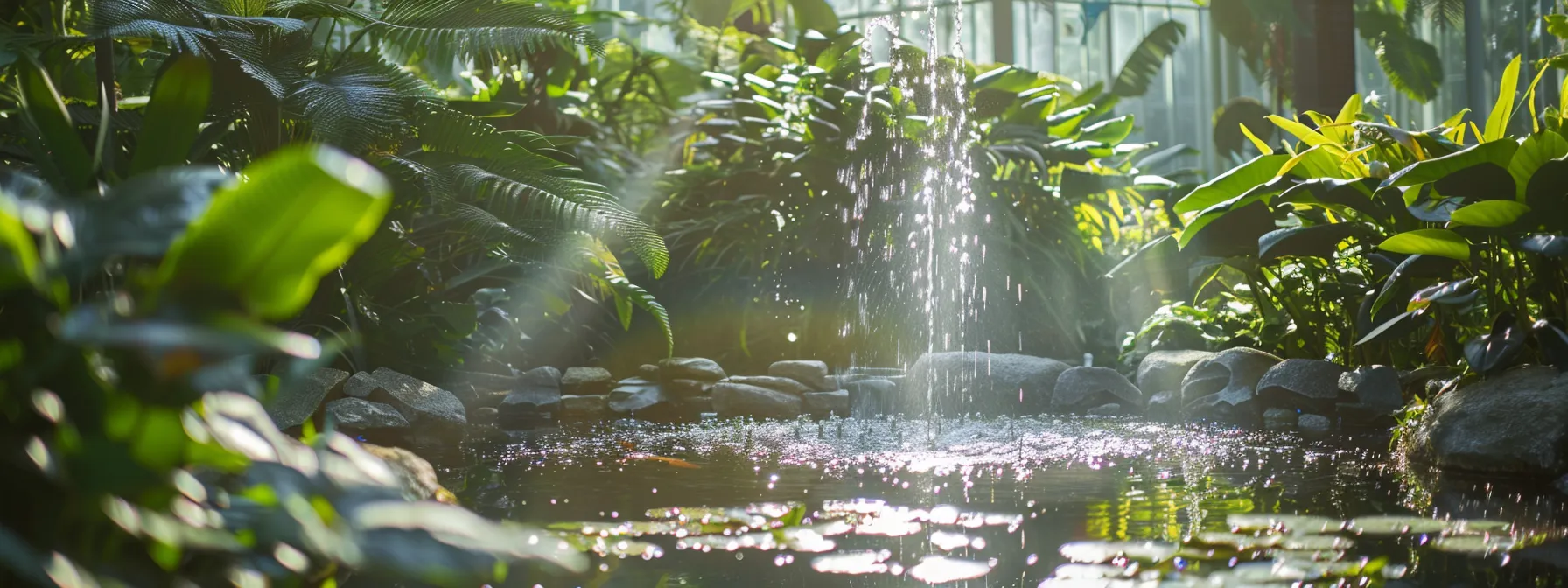
How Do I Keep My Pond Water Clear Without Harming Fish or Plants?
Crystal-clear pond water doesn’t have to come at the expense of your fish or aquatic plants. Whether you’re maintaining a koi pond, hybrid pond, or ecosystem pond, there are proven strategies to achieve clean water while supporting a thriving aquatic environment. At Clarity Ponds, we design, build, and maintain natural water features that stay clean the right way, without harsh chemicals or risky shortcuts.
Why Pond Water Gets Cloudy in the First Place
Before solving the problem, it helps to understand the cause. Pond water becomes cloudy or green due to:
- Excess nutrients (from fish waste, decaying leaves, uneaten food)
- Algae blooms are fueled by sunlight and those nutrients
- Inadequate filtration or circulation
- Poor plant-to-fish ratio
- Sediment or fish stirring up the bottom
Keeping your pond balanced means managing all of these factors together.
Natural Ways to Keep Your Pond Clear (and Safe)
1. Use Beneficial Bacteria
Add beneficial bacteria to break down organic matter like fish waste and uneaten food. These bacteria colonize your filters, rocks, and pond floor, helping to:
- Convert ammonia into safer forms (nitrates)
- Consume excess nutrients that would otherwise feed algae
- Prevent mud and muck buildup on the bottom
Bacteria treatments are 100% safe for fish and plants, and they support your pond’s natural ecosystem.
2. Add the Right Aquatic Plants
Plants are nature’s filtration system. They pull nutrients out of the water, block sunlight that algae needs, and create a balanced ecosystem. For St. Louis ponds, we recommend:
- Water lilies & lotus: Provide shade and absorb nutrients
- Blue flag iris, pickerel weed, duck potato: Thrive in shallow water and act as nutrient sponges
- Submerged plants like elodea: Oxygenate and filter the water
- Floating plants like water hyacinth (summer only): Absorb nitrates and phosphates quickly
These plants not only clean the water but also make your pond more beautiful and resilient to seasonal changes.
3. Maintain Proper Filtration
Every pond needs mechanical and biological filtration to trap debris and process fish waste. Hybrid and koi ponds should include:
- Bottom drains and skimmers to remove solids
- Biofalls or external filters to house beneficial bacteria
- UV clarifiers to kill green water algae without harming fish
An efficient filter system keeps water moving, oxygenated, and clean.
4. Don’t Overstock Your Pond
Too many fish means more waste than your plants and filter can handle. Follow these stocking guidelines:
- Koi ponds: About 1″ of fish per 10 gallons (less if not heavily filtered)
- Ecosystem ponds: Keep fish load light and balanced with plants
Popular pond fish and their resilience:
| Fish | Resilience | Notes |
| Koi | Sensitive | Require high-quality filtration; can uproot plants |
| Goldfish | Hardy | Ideal for smaller ponds and planted environments |
| Orfe | Moderate | Need high oxygen; good for insect control |
| Mosquitofish | Very hardy | Great for mosquito control in small ponds |
5. Remove Debris Regularly
Leaves, dead plants, and fish waste release nutrients as they decompose. Use a skimmer net to remove debris weekly, especially in fall. In ecosystem ponds, plan for an annual cleanout to reset the system.
6. Use Shade to Control Algae
Too much sun fuels algae. Add surface coverage:
- Water lilies or lotus for living shade
- Floating plants (seasonal)
- Strategic landscaping or pergolas around the pond
Reducing sunlight slows algae growth without chemicals.
7. Watch Your Feeding
Overfeeding is a common cause of water problems. Only feed what fish will eat in 3-5 minutes. Uneaten food breaks down and feeds algae.
Chemical Treatments: Use With Caution
While chemical algaecides and flocculants exist, they often create more problems than they solve:
- Kill beneficial algae and microbes
- Cause oxygen crashes that harm fish
- Leave behind toxins or residues
If used, they must be dosed carefully and only in emergencies. At Clarity Ponds, we prioritize natural solutions that keep your fish and plants safe long-term.
Choose the Right Pond Design
Koi Ponds
- Fish-first design
- Minimal plants
- Heavy filtration required
- Very clear water possible
Hybrid Ponds
- Best of both worlds
- Koi + plants coexist
- Uses filtration and plants to clean water
In St. Louis, your pond must also adapt to hot summers and freezing winters. Our designs account for these seasonal swings with proper plant selection, depth, and circulation.
Contact Clarity Ponds Today!
Clear water is the result of a balanced ecosystem—not just filters and gadgets. With the right plants, fish load, filtration, and maintenance practices, your pond can stay clean and healthy without harming your aquatic life. At Clarity Ponds, we design and maintain ponds that work with nature, not against it. If you’re struggling with murky water or want a low-maintenance, fish-safe pond that stays clear year-round, we’re here to help. Ready for crystal-clear water the natural way? Contact Clarity Ponds to schedule a consultation.

